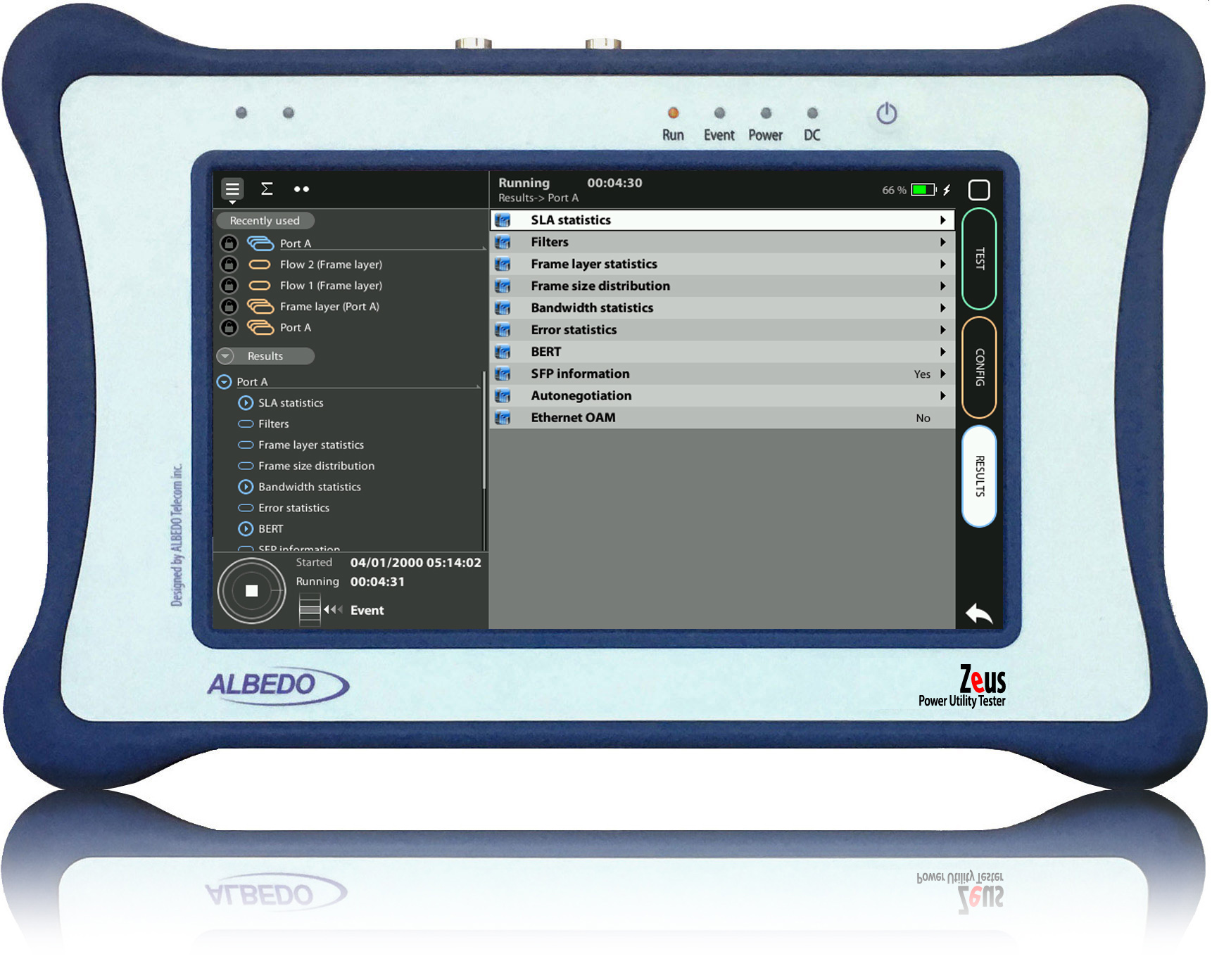Testing PTP utility profile
The PTP Utility profile is tailored for utility applications, particularly power distribution and smart grid systems, to ensure accurate time synchronization among devices in these critical infrastructures.
MIAMI NOV.10.2023
About PTP
The Power industry is adopting the PTP protocol to synchronizing substations because several reasons:
- Smart Grid: There is an increasing need for communication among various intelligent devices and PTP facilitates it and data exchange among these devices, supporting advanced applications.
- Resiliency: PTP can be implemented with redundancy enhancing the resilience of the system to ensure that even if one source or path fails, the synchronization remains robust.
- Reliability: Accurate time synchronization is critical for maintaining the stability and reliability of the power grid and PTP ensures that various devices in a substation operate perfectly.
- Event Logging: Events need to be precisely time-stamped for troubleshooting then PTP ensures that events are recorded with high precision.
- Protection: Control systems in power substations rely on a good synchronization. This is particularly important for functions such as fault detection, to identifying and isolating faults.
- Standards: Regulatory often mandate precise time synchronization in power systems. PTP, being a standard for timing, allows utilities to comply regulations.
By adopting PTP the industry aims to enhance the overall performance, reliability, and efficiency especially in the context of evolving technologies and the increasing complexity of modern power grids.

Fig1. Power Utility Sustation.
PTP Utility profile
The PTP Utility profile is tailored for applications in the utility industry, particularly in power distribution and smart grid systems. It ensures precise time synchronization among devices in these critical infrastructures, helping to coordinate and manage various components efficiently. This level of synchronization is crucial for activities like fault detection, grid management, and data logging in utility networks.
PTP Utility profile is commonly employed in power substations where the synchronization of devices is crucial for maintaining the reliability and efficiency of the power grid. It helps in tasks such as synchronizing protection relays, ensuring accurate time-stamping of events, and facilitating coordinated control and monitoring of the substation components. The precise time synchronization provided by PTP is essential for the reliable and safe operation of power systems.

Fig 2. ALBEDO testers executing the verification of a PTP clock with Utility profile.
Testing the PTP Clock
xGenius and Zeus can be configured to act as PTP slave clocks. There is no difference between a standard PTP clock and these devices, but the testers provide measurement results that are useful for qualifying the stability of a PTP clock source. In pseudo-slave emulation mode, the device behaves as a PTP slave, but maintains an independent synchronization source that allows the device to calculate TE and other performance metrics such as MTIE/TDEV based on the comparison of the phase and frequency of the test signal to the clock reference input. The following description assumes that the instruments are configured with factory default settings.
The testers can also measure the quality of the PPS output and will also verify the TE and MTIE/TDEV of this signal.

Fig 3. Zeus and xGenius are the two most popular and featured testers to test PTP.
ALBEDO PTP testers
ALBEDO xGenius is a multitechnology tester equipped with 8’ screen and all the features you need to install and maintain telecom networks up to 10Gigabit Ethernet It supports legacy and new generation interfaces in order to verify Ethernet / IP, PTP, SyncE, ToD, IRIG-B, T1 / E1, C37.94, RS-232, G703 and check protocols such as GOOSE, SV or MMS. It is suitable for measuring legacy and next-gen networks as it has the most common interfaces. Field engineers do not need to carry any more several testers or multiple modules to turn up and monitor telecom infrastructures.
xGenius is equipped with all of the features you may need or imagine such including BER, RFC2544, eSAM, Multistream, MPLS, Jitter, Wander, etc. to permit the verification of the transmission layer in those terms of performance and quality required to support audio, video or critical data applications.
Built-in Rubidium / GPS clock
The integrated GPS/GLONASS receiver allows easy connection and use while fast acquisitions and excellent accuracy minimizing the time impairments of external devices. This an ideal solution to synchronize thanks to top performance in holdover mode while top accuracy in a real hand-held battery operated IP tester.
Power Utilities
Power utility companies must protect high voltage lines and monitor them constantly. Communication between power substations using the standard C37.94 is funda mental order to ensure correct operation while controlling every single alarm and failure. With xGenius a fully integrated test is possible.


